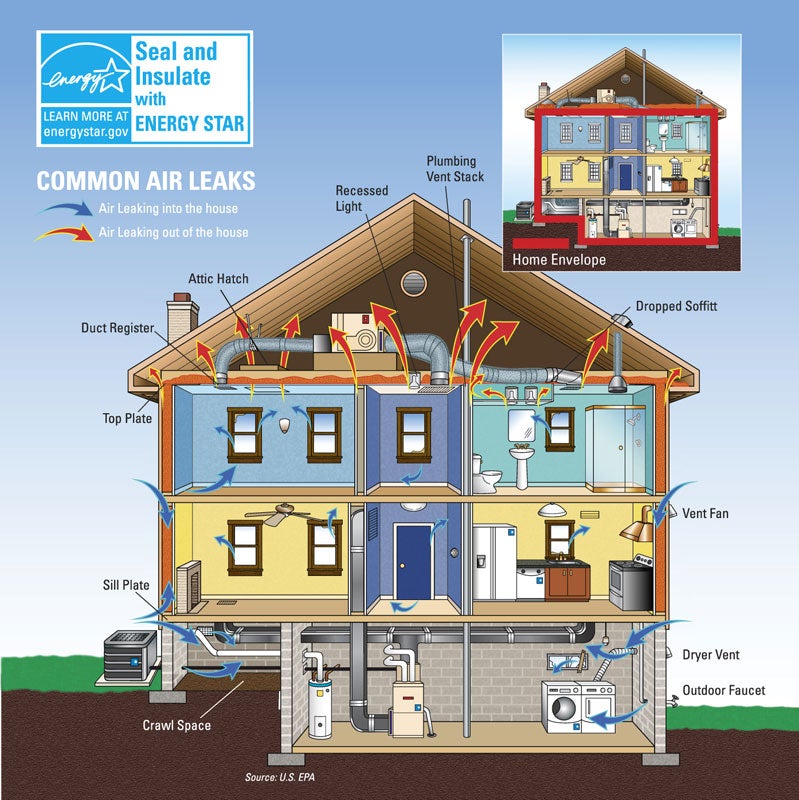 Sealing & Insultating
Sealing & Insultating
Reducing the amount of air that leaks in and out of your home is a cost-effective way to cut heating and cooling costs, improve durability, increase comfort, and create a healthier indoor environment. Caulking and weatherstripping are two simple and effective air-sealing techniques that offer quick returns on investment, often one year or less. Caulk is generally used for cracks and openings between stationary house components such as around door and window frames, and weatherstripping is used to seal components that move, such as doors and operable windows.
- Caulk and weatherstrip doors and windows that leak air.
- Caulk and seal air leaks where plumbing, ducting, or electrical wiring comes through walls, floors, ceilings, and soffits over cabinets.
- Install foam gaskets behind outlet and switch plates on walls.
- Inspect dirty spots in your insulation for air leaks and mold. Seal leaks with low-expansion spray foam made for this purpose and install house flashing if needed.
- Look for dirty spots on your ceiling paint and carpet, which may indicate air leaks at interior wall/ceiling joints and wall/floor joists, and caulk them.
- Cover single-pane windows with storm windows or replace them with more efficient double-pane low- emissivity windows.
- Use foam sealant on larger gaps around windows, baseboards, and other places where air may leak out.
- Cover your kitchen exhaust fan to stop air leaks when not in use.
- Check your dryer vent to be sure it is not blocked. This will save energy and may prevent a fire.
- Replace door bottoms and thresholds with ones that have pliable sealing gaskets.
- Keep the fireplace flue damper tightly closed when not in use.
- Seal air leaks around fireplace chimneys, furnaces, and gas-fired water heater vents with fire-resistant materials such as sheet metal or sheetrock and furnace cement caulk.
For more information on sealing your home click here.
 Proper insulation can keep your home comfortable and cut energy costs. With these tips, you will be ready to update your insulation and start saving money.
Proper insulation can keep your home comfortable and cut energy costs. With these tips, you will be ready to update your insulation and start saving money.
At EnergySavers.gov, you can find out the R-value your insulation should be. R-value measures resistance to the flow of heat and is one of the most important factors in insulation. Insulation can come in the form of batts, rolls, loose fill, expanding foam, or spray-in insulation. Foams, spray-ins, and loose fill are good for hard to reach areas. Batts and rolls are good for large areas. The R-Value and type of insulation you need depend on where you live, the building materials in your home, and your heating and cooling system.
Insulation can be difficult to update because it often involves getting behind walls. However, the attic is an easy place to start and has a big effect on your home’s overall efficiency. To upgrade your insulation, you will want to know your starting point by examining your current insulation. If you can see the ceiling joists in your attic, you do not have enough insulation. You can lay new insulation directly on top of existing insulation. Be sure to wear a respirator mask and safety goggles and to follow all the safety precautions accompanying the insulation.
If your home is in need of a more serious insulation upgrade, it may be a good idea to call a professional.
For more information on sealing and insulating click here. For a DIY guide to sealing and insulating click here.
